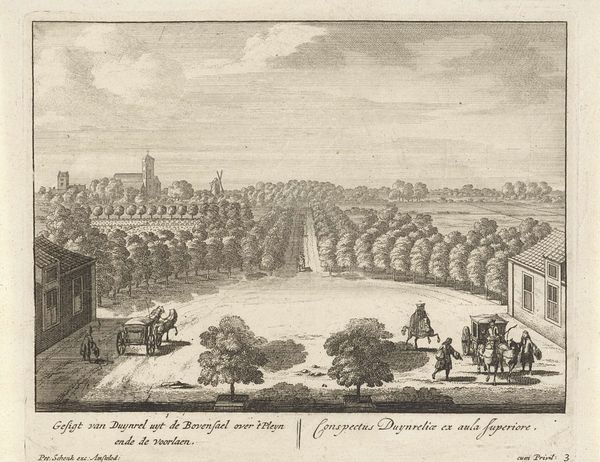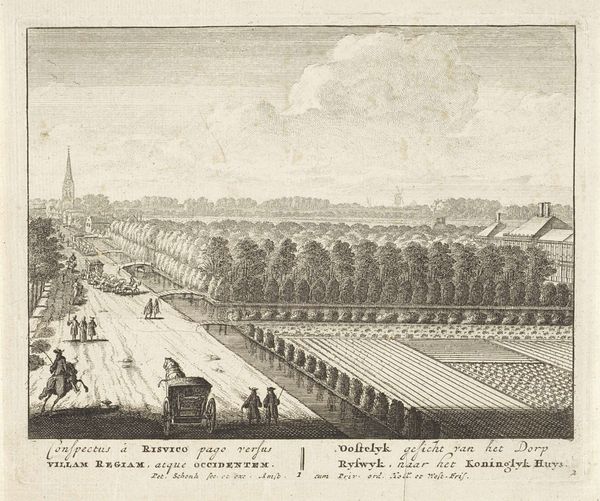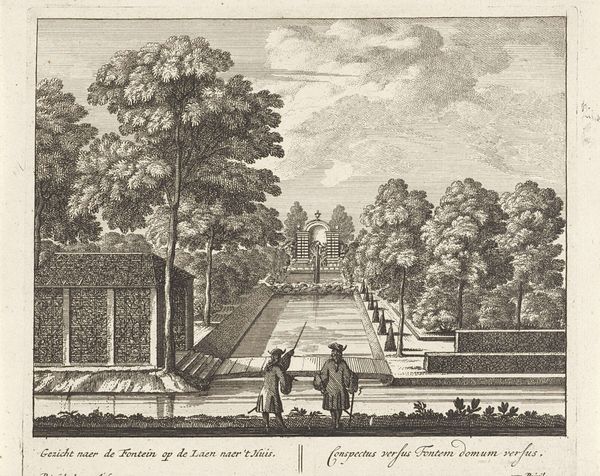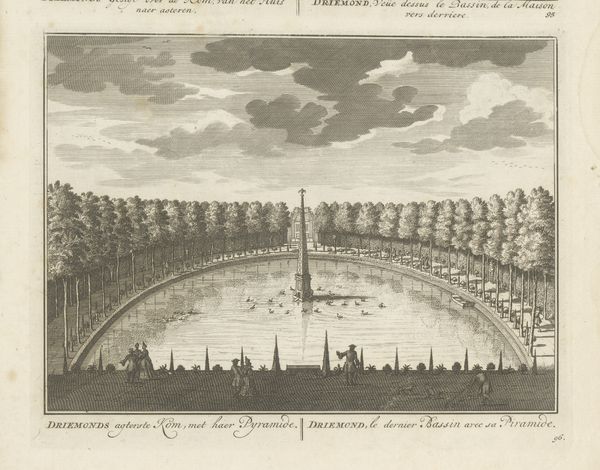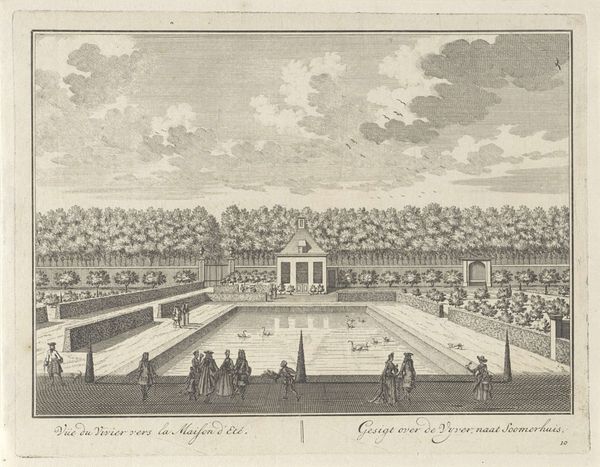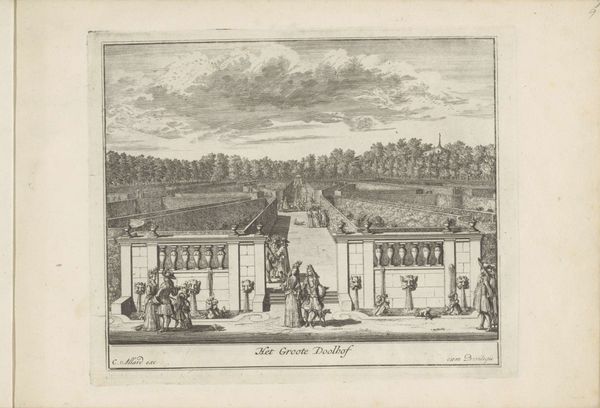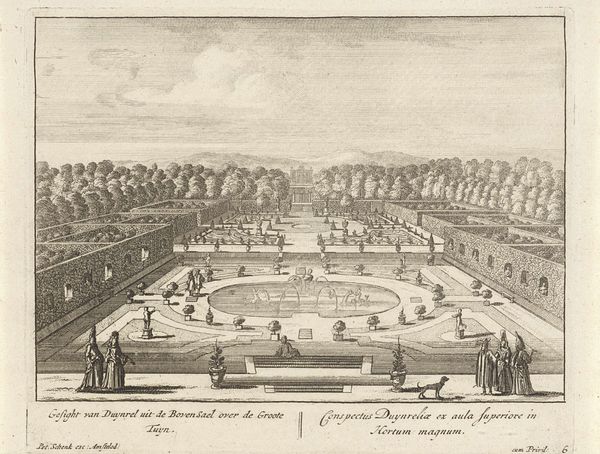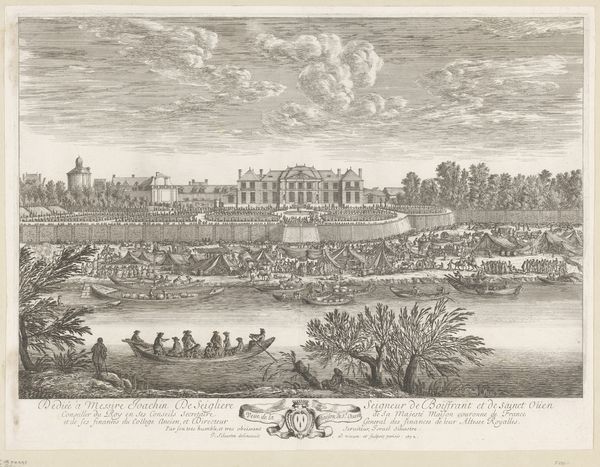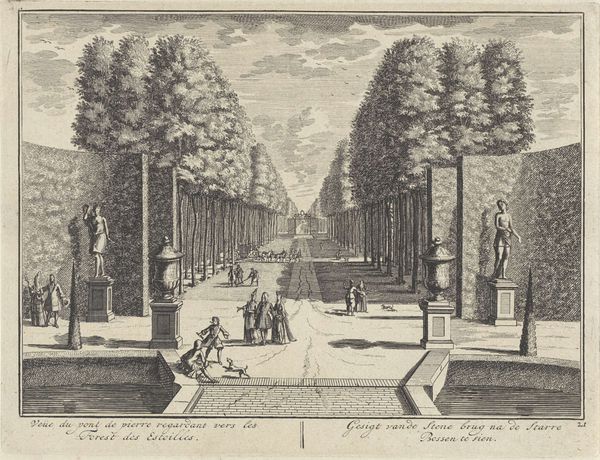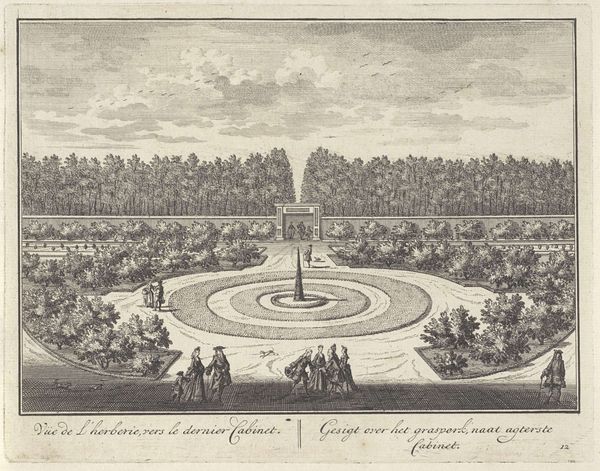
print, engraving, architecture
#
baroque
# print
#
landscape
#
engraving
#
architecture
Dimensions: height 162 mm, width 202 mm
Copyright: Rijks Museum: Open Domain
Hendrik de Leth created this print of the basin in the garden of Huis ter Meer in Maarssen. It's a scene of leisure, isn't it? A garden, a fountain, and elegantly dressed figures enjoying the space. But this image is less about the individuals and more about the cultural values it embodies. The formal garden, popular in the Dutch Republic during the 18th century, was a symbol of control and order. Nature, carefully manicured and shaped, reflected the social hierarchy and the power of the elite who owned these estates. De Leth's print serves as both a record and a celebration of this controlled environment. Understanding this image requires delving into the social history of the Dutch Republic. The wealth generated through trade created a class with the means to create these elaborate displays of status. Prints like these were not merely artistic endeavors; they were documents of a specific moment in time. By exploring estate records, travel logs, and other archival materials, we can unravel the complex web of social meanings embedded within this seemingly simple garden scene.
Comments
No comments
Be the first to comment and join the conversation on the ultimate creative platform.

